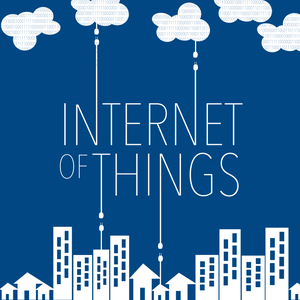
The Internet of Things Podcast - Stacey On IoT
Stacey Higginbotham, tech journalist
The Internet of Things Podcast - Stacey on IoT
- 1 hour 53 secondsEpisode 437: Goodbye and good luck
This is the final episode of The Internet of Things Podcast, and to send us off after eight years, we don’t discuss the big news of the day such as Arm’s planned IPO, a new display option from Brilliant, or new gear from Leviton. Instead we share our reasons for stepping back from the show, and where we’re heading next. Also, because everyone wants some new podcasts or IoT news options, we share some of our favorite resources. On the podcast side, I sometimes listen to the Mr. Beacon Show or The IoT Podcast. We also read The Verge, TechHive, The Ambient, and The Journal of Innovation published by the Industrial IoT Consortium. We both stop in at r/smarthome and r/homeautomation on Reddit, and I’ll read anything by James Blackman over at RCR Wireless for industrial IoT news. I also check out the Axios Pro Rata newsletter from Dan Primack to see fundings and sales, and subscribe to Target is New by Iskander Smit for thoughtful takes on IoT, AI, and design. There are many other options out there, but we didn’t want to make our goodbye episode any longer. To close out the show we answered our last listener question on what we think makes a complete smart home and our thoughts on future innovation that will keep the industry moving forward.
 After we started the show full-time in 2016, I never had matching light switches again. Image courtesy of S. Higginbotham.
After we started the show full-time in 2016, I never had matching light switches again. Image courtesy of S. Higginbotham.
Our guest this week is Jennifer Pattison Tuohy from The Verge. I’ve known Jenn for almost a decade from her work covering the smart home for a variety of publications. She is smart, tries everything she writes about, and has the history in covering technology to see the bigger picture. She’s on the show to talk about where the smart home is today, the state of Matter, and what business models are likely to work for connected home devices. She gives us some insights into some cool things the Connectivity Standards Alliance is planning, her thoughts about smart home infrastructure versus devices, and even shares her current smart home setup. It’s the perfect note on which to end the show.
Hosts: Stacey Higginbotham and Kevin Tofel
Guest: Jennifer Pattison Tuohy from The Verge- Why we’re saying goodbye.
- What to read or listen to when we’re gone.
- What we’re looking forward to in IoT innovations.
- What might be next for Matter.
- What Jenn Tuohy from The Verge has in her home.
The post Episode 437: Goodbye and good luck appeared first on IoT Podcast - Internet of Things.
24 August 2023, 9:00 am - 58 minutes 3 secondsEpisode 436: Can Alexa (and the smart home) stand on its own?
Amazon’s head of devices, David Limp, plans to retire as part of a wave of executives that have been leaving Amazon in the last year. Also, next year Alexa and the Amazon Echo will be 10 years old, which prompted us to take a look at the role Alexa and the Amazon Echo have played in the smart home, along with what has and hasn’t changed. Our concerns about the state of the smart home are perfectly illustrated by this review of the Mill composting system created by Nest co-founder Matt Rodgers, and the news that Masonite is now selling its expensive smart door at Home Depot. There’s positive news as well, as the FCC releases its Notice of Proposed Rule Making for the IoT cybersecurity label. Y’all have 30 days to comment, so get on it. Then we talk about Microsoft’s discovery of a new set of vulnerabilities affecting industrial equipment, and a new company that will become a secondary source of Z-Wave chips. Kevin also shared his review of the Homey Pro smart home hub, which is expensive but allows users to control their devices locally. Finally, we answer a listener question about what light bulb a woodworker should use in a lamp he’s trying to build.
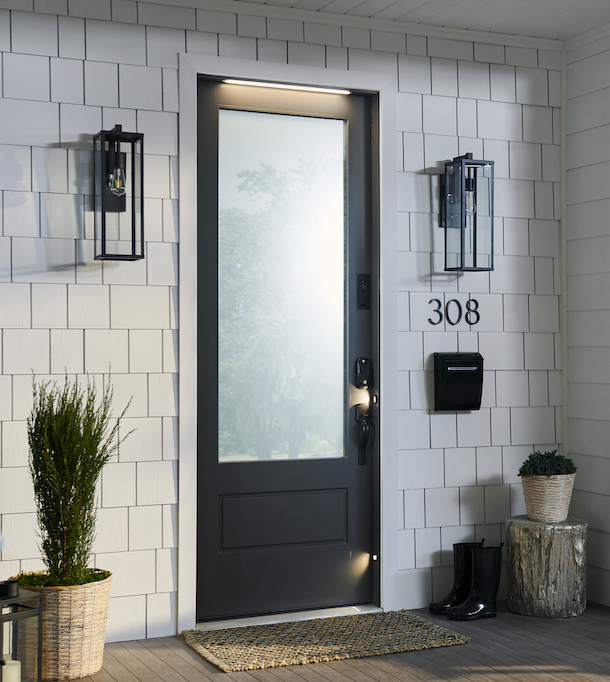 The Masonite smart door is on sale at Home Depot. Image courtesy of Masonite.
The Masonite smart door is on sale at Home Depot. Image courtesy of Masonite.
Our guest this week is Mariusz Malkowski, founder and CTO of Trident IoT, who tells us about the company’s origin and what it means for the Z-Wave community. He also explains how Matter will work with Z-Wave, and the importance of bridging between the two standards. We discuss the future of Z-Wave, including the plans for Z-Wave Long Range and planned security upgrades. We then cover how Trident is going to build Z-Wave chips, but also how it will focus on building or integrating other smart home radio protocols into devices, and will act as a Z-Wave certification house as well. Enjoy the show.
Hosts: Stacey Higginbotham and Kevin Tofel
Guests: Mariusz Malkowski, founder and CTO of Trident IoT
Sponsors: Skyhawk- David Limp’s departure from Amazon inspires a smart home reckoning
- Are expensive doors and compost services the future of the connected devices?
- The Homey Pro is an expensive hub with privacy in mind
- Why a new chipmaker could boost the Z-Wave standard
- Trident IoT is building a new type of chip company
The post Episode 436: Can Alexa (and the smart home) stand on its own? appeared first on IoT Podcast - Internet of Things.
17 August 2023, 9:00 am - 1 hour 4 minutesEpisode 435: How Honeywell is approaching TinyML
This week we make a big announcement about the podcast and newsletter. Get ready! Then we talk about the issues with Matter and who’s to blame. We lay out the challenges that both we and The Verge have highlighted with Thread credentialing, and talk about uneven device support. It’s a mess. Other messy topics include the prospect of hacked radiation sensors in Chernobyl, as reported by Kim Zetter. Then we get chippy, discussing the new RISC-V company that Qualcomm, NXP, Infineon, and others are backing, and the proposed sale of an IoT module business to Renesas. A drone startup is building an on-demand drone network that looks like a satellite network, and we have thoughts. We also discuss Kevin’s experience and reaction to our audience’s comments on his transition to Home Assistant. Then, we highlight some tips to help you prep your home ahead of smart energy management programs. Finally, we answer a listener question about the Amazon Echo Show and devices that might work with it.
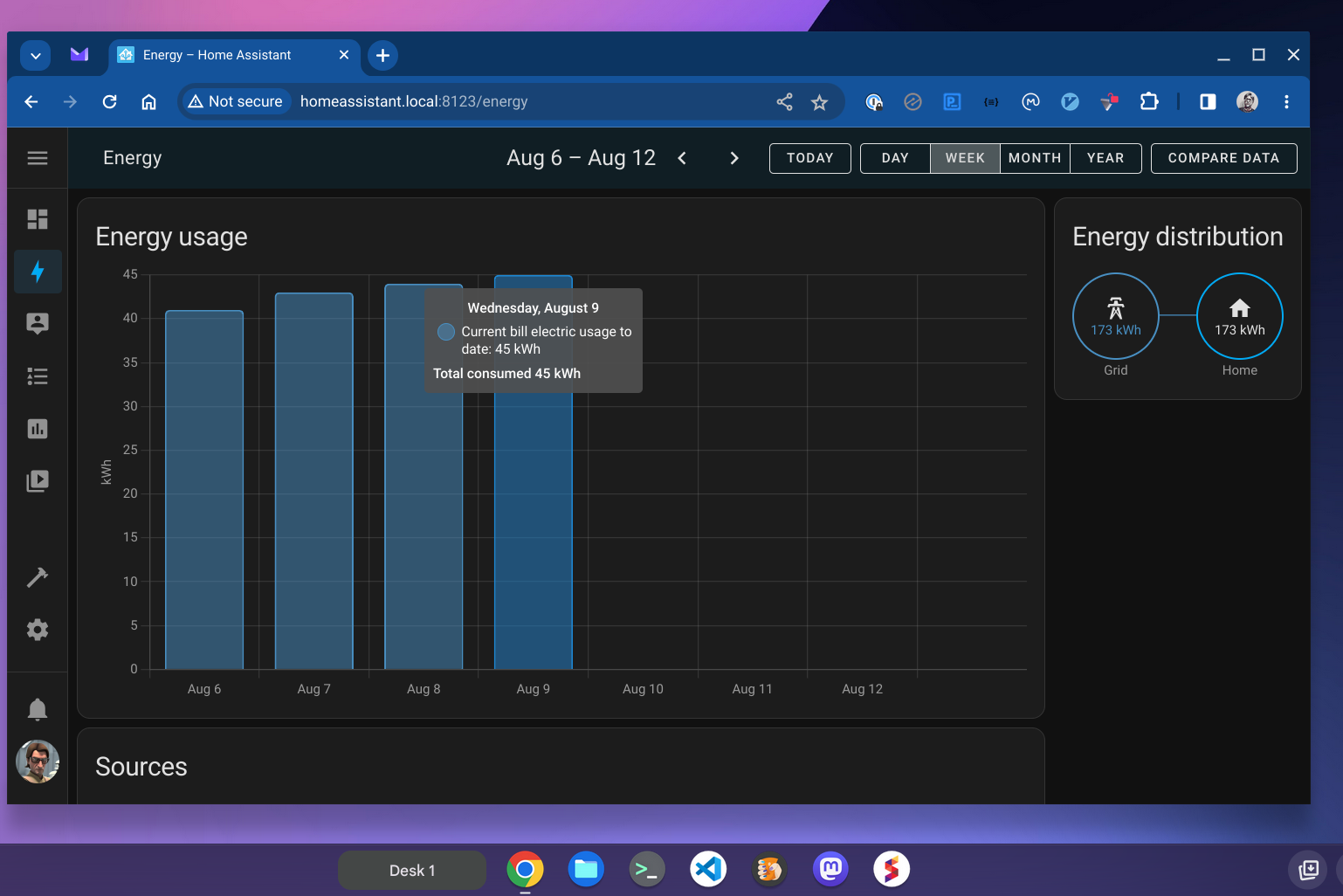 Home Assistant energy monitoring. Image courtesy of K. Tofel
Home Assistant energy monitoring. Image courtesy of K. Tofel
Our guest this week is Muthu Sabarethinam, VP AI/ML product and services with Honeywell, who is on the show to talk about TinyML. We start off discussing how Honeywell is thinking about using data from equipment to build services, and then segue into talking about how Honeywell might use TinyML located on sensors. Sabarethinam explains the reasons Honeywell wants algorithms that can run directly on a sensor, and how it will help with security, power, and latency. He also shares his thoughts on how companies should package their algorithms to make it easier to deploy TinyML at scale. For perspective, Honeywell supports more than a million sensors in the field that could all use TinyML. We conclude by talking about business models and how customers want to access data. It’s a great show.
Hosts: Stacey Higginbotham and Kevin Tofel
Guest: Muthu Sabarethinam, VP AI/ML product and services with Honeywell
Sponsors: Wilderness Labs and Skyhawk- We’re hitting pause on the podcast later this month
- Sensors can lie, so how should we offset that risk?
- Why RISC-V is getting so much love
- Why Honeywell wants local AI on industrial sensors
- How to think about building AI sensors that can scale
The post Episode 435: How Honeywell is approaching TinyML appeared first on IoT Podcast - Internet of Things.
10 August 2023, 9:00 am - 1 hour 1 minuteEpisode 434: So many new hubs, and a primer on LPWANs
This week’s show kicks off with a surprising revelation from Kevin, who has decided to swap out his smart home platform. He explains his choice, which also may represent a theme of sorts, as we see more and more high-end smart home hubs hit the market. We discuss the HOOBS Pro device and the Homey Pro, both of which cram a bunch of different radios into one powerful box. Then we talk about California’s Privacy Protection Agency and its decision to investigate how connected car companies are using consumers’ data. Do connected car companies violate California’s 2018 privacy law? After that we dig into a new report about the troubles facing OT and IT security professionals, and marvel over a water-soluble PCB board that might help address some of the challenges associated with e-waste. The board isn’t destined for large scale production or IoT devices yet, but we applaud any effort to bring more easily recycled electronics to the market. Finally, we hear from Signify’s CEO that the maker of Philips Hue devices is planning a video camera for a home security offering. We close the first segment with a pair of comments from our listeners responding to last week’s question about turning off lights using a sensor.
 Infineon is testing out a water-soluble PCB board. Image courtesy of Infineon.
Infineon is testing out a water-soluble PCB board. Image courtesy of Infineon.
Our guest this week is Alexis Susset, the CTO of UnaBiz. He’s on the show to explain the value of Low-Power Wide-Area networks and Unabiz’s plans to offer many LPWANs under one roof. He shares how the acquisition of Sigfox’s assets last year helped give Unabiz the credibility it needed to create deals with other LPWAN providers to share their networks. He also does a deep dive into the pros and cons of various available LPWAN technologies such as Sigfox, LoRaWAN, and cellular. Finally, we talk about the rise of satellite networks for IoT devices and whether or not we’ll need any more LPWAN technologies in the near future. Enjoy the show.
Hosts: Stacey Higginbotham and Kevin Tofel
Guests: Alex Susset, the CTO of UnaBiz
Sponsors: Wilderness Labs and Skyhawk- Kevin switches to Home Assistant, and even his wife likes it
- Hubs are back, baby
- Criminals are still hacking enterprise networks and critical infrastructure
- How Sigfox helped UnaBiz make deals with other LPWAN providers
- Why IoT devices might benefit from specialized satellite
The post Episode 434: So many new hubs, and a primer on LPWANs appeared first on IoT Podcast - Internet of Things.
3 August 2023, 12:00 pm - 1 hour 54 secondsEpisode 433: Tracking air quality with the IoT
This week we didn’t see a ton of news, yet we managed to talk about several big trends in IoT. We started with an update on Amazon’s planned acquisition of iRobot, and Amazon dropping the price by 15%. We explain why and then decided to explain in depth why we need the planned cybersecurity labeling plan for connected devices because so many people asked me why we need this. We then talk about Unabiz creating a partnership with Semtech to bring Sigfox technology into the Semtech network. Then we talk about insurance companies using data gleaned from drones, satellite photos, and IoT devices and how that may hurt consumers, as insurance companies try to cancel policies in risky areas. This is where climate change, the IoT, and data privacy will all intersect in ways that will harm consumers. We then ponder what will happen with Google displays as the company pulls back from its Fuchsia OS, and how a smart home reporter’s broken HVAC system made her realize the limits of the smart home. Finally, we answer a listener question about using a motion detector to make sure kids turn off their lights.
 The PurpleAir Zen works both indoors and outdoors and costs $299. Image courtesy of PurpleAir.
The PurpleAir Zen works both indoors and outdoors and costs $299. Image courtesy of PurpleAir.
Our guest this week is Adrian Dybwad, CEO and founder of PurpleAir, which makes a line of air quality sensors. As we head into wildfire season here on the West Coast, air quality data is becoming more important for people. For example, I turn regularly to PurpleAir data from the app, its web site, or on my Google display to see if I should go outside for a run or hold off. Dybwad and I talk about why the company was created, and how the air sensors are helping communities lobby for positive policy changes that can improve air quality. We also talk about how to think about connected devices contributing to citizen science, and why having a lot of sensors can mitigate concerns over accuracy. We spend a lot of time on how air quality sensors work and how to place them optimally as well. Enjoy the show.
Hosts: Stacey Higginbotham and Kevin Tofel
Guest: Adrian Dybwad, CEO and founder of PurpleAir
Sponsors: Wilderness Labs and Skyhawk- Why Amazon cut the price for Roomba maker, iRobot
- Why you (and everyone else) should care about secure IoT devices
- What we really need from our smart homes
- How PurpleAir uses quantity to assure quality
- The best place to set up your air quality sensors
The post Episode 433: Tracking air quality with the IoT appeared first on IoT Podcast - Internet of Things.
27 July 2023, 9:00 am - 56 minutes 55 secondsEpisode 432: How to make IoT more consumer-friendly
This week we dig in on two topics that will make the internet of things friendlier for consumers. The first is the newly announced cybersecurity label plan from the White House that will create a way for consumers to see if their planned IoT purchase meets adequate cybersecurity standards. The second is our suggestion that device makers plan for failure when building a smart product, to help prevent consumers from spending hundreds or thousands on a connected device only to see it lose functionality when the manufacturer shuts down or sells. This happened recently for folks who spent $5,000 on VanMoof bikes and for folks who spent about $225 for a connected BBQ controller from iKamand. The iKamand app was turned off without notice to subscribers about 18 months after the company was purchased by Middleby Corp. Then we switch to a lighter topic. Literally, as we discuss LiFi and what the newly created IEEE standard for the tech may mean for the IoT. Then we discuss smaller news items such as funding for an IoT device that attaches to mobility aids to predict falls, Leviton updating devices to work with Matter, a new global eSIM plan for IoT devices from Verizon, and a new dev board that combines Arduino and Espressif’s ESP32. Finally, we answer a listener question about smart light bulb sockets.
 The U.S. Cyber Trust Mark could indicate that your next IoT device meets select security requirements. Image courtesy of the FCC.
The U.S. Cyber Trust Mark could indicate that your next IoT device meets select security requirements. Image courtesy of the FCC.
Our guest this week is Steve Hanna, a distinguished engineer at Infineon and the chair of the security working group at the Connectivity Standards Alliance. He’s on the show to tell us more about the need for a voluntary, government cybersecurity mark for devices, and explain why developing such a mark is so difficult. We talk about the FCC’s role in managing the program, the time frame for a mark, and how the government plans to think about keeping up with the always-changing security landscape. We also discuss how Infineon’s customers are changing their views about IoT security labels, and how the mark relates to work done by the Arm’s PSA security standard and the security elements that are part of the Matter standard. It’s a good interview, made better by the fact that Hanna sounds just like Mr. Rogers.
Hosts: Stacey Higginbotham and Kevin Tofel
Guest: Steve Hanna, a distinguished engineer at Infineon
Sponsors: Wilderness Labs and Particle- Why we want a U.S. Cyber Trust Mark for consumer devices
- What happened to this smart BBQ controller?
- Leviton embraces Matter for its switches
- Badges, QR codes, and building a layered mark for cybersecurity
- Where will privacy fit into any security mark or standard?
The post Episode 432: How to make IoT more consumer-friendly appeared first on IoT Podcast - Internet of Things.
20 July 2023, 9:00 am - 58 minutes 10 secondsEpisode 431: Why Josh.ai added ChatGPT to the home
This week on the show, Kevin and I start off talking about some of the Roku gear I’ve been playing with for the last week. We discuss the gear and the subscription plans and how they compare with what else is on the market, before moving on to talk about Latch laying off 59% of its workforce in preparation for what I suspect will be a pivot from access control to a services business aimed at folks living in luxury apartments. After that, we share some tales of civil disobedience from San Francisco, where activists are placing traffic cones on top of self-driving vehicles to halt them in their tracks. Then we devote the rest of our time to novel sensors and platforms for sensing, starting with research showing that seven days of smart watch data can predict Parkinson’s, and research on a wearable for people with epilepsy that can predict seizures. We also cover funding for Pano, a camera platform that uses computer vision to “see” fires in remote locations, and a sensing platform called Nami raising $10 million in Series A financing. There’s also a new sensing device called the Nano Computer from Nodle that combines a few sensors, an Arm M-0 microcontroller, a Bluetooth radio, and a printed battery in a device that should cost about $3 per device at shipments above 100,000 devices. Finally, we answer a listener question about the Aqara FP2 presence sensor and security.
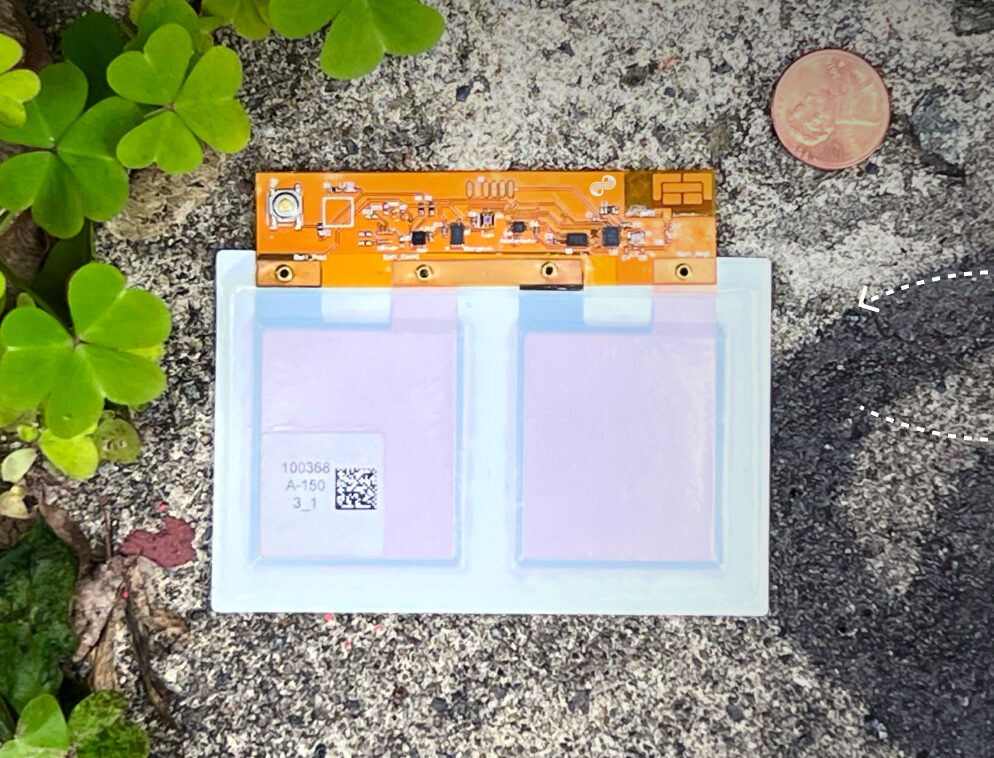 Nodle has shown off a design for a cheap, battery-powered sensor package. Image courtesy of Nodle.
Nodle has shown off a design for a cheap, battery-powered sensor package. Image courtesy of Nodle.
Our guest this week is Alex Capecelatro, CEO and co-founder of Josh.ai, who returns to the show to talk about Josh.ai adding generative AI to the company’s voice platform. We get a lesson in Josh.ai’s history and why it decided to build a voice interface for the home even after Apple, Amazon, and other big companies launched their own products. Then he explains how Josh.ai added ChatGPT to its platform and the steps it took to help customers understand the limitations of the service. We talk about why it’s useful and how customers are using it so far. Since every company in the smart home space is contemplating the role generative AI will play in their products, this is an essential listen.
Hosts: Stacey Higginbotham and Kevin Tofel
Guest: Alex Capecelatro, CEO and co-founder of Josh.ai
Sponsors: Blynk and Particle- Who is the Roku smart home for?
- Latch cleaned house before Jamie Siminoff takes over
- The most innovative element in the IoT is new sensing technology
- What Josh.ai learned when adding generative AI to its voice platform
- Practical thoughts on privacy for voice assistants and generative AI
The post Episode 431: Why Josh.ai added ChatGPT to the home appeared first on IoT Podcast - Internet of Things.
13 July 2023, 9:00 am - 59 minutes 30 secondsEpisode 430: The theme of this show is wearables
This week’s podcast focuses on wearables, from hearing aids to mixed reality headsets. We start the show talking about the potential future of Apple AirPods as a hearing aid or an additional health-focused wearable. And while on the topic of Apple, we mention that the badges on your smart home devices will say the device works with Apple Home as opposed to Apple HomeKit. And then it’s back to wearables with our skepticism over the Humane AI pin. In smart home news, Shelly has new Z-Wave devices coming, and a fledgling smart home company called TUO has released a new Matter smart button. Yes, I purchased the company’s smart button. Then we discuss Swarm stopping the sale of its original VHF satellite connectivity for IoT devices to focus on its direct to cell satellite services. We then give an update on the purchase of Jamie Siminoff’s Honest Day’s Work startup by Latch. Finally, we answer a listener’s question about how to create a routine on Amazon’s Alexa system that controls multiple devices.
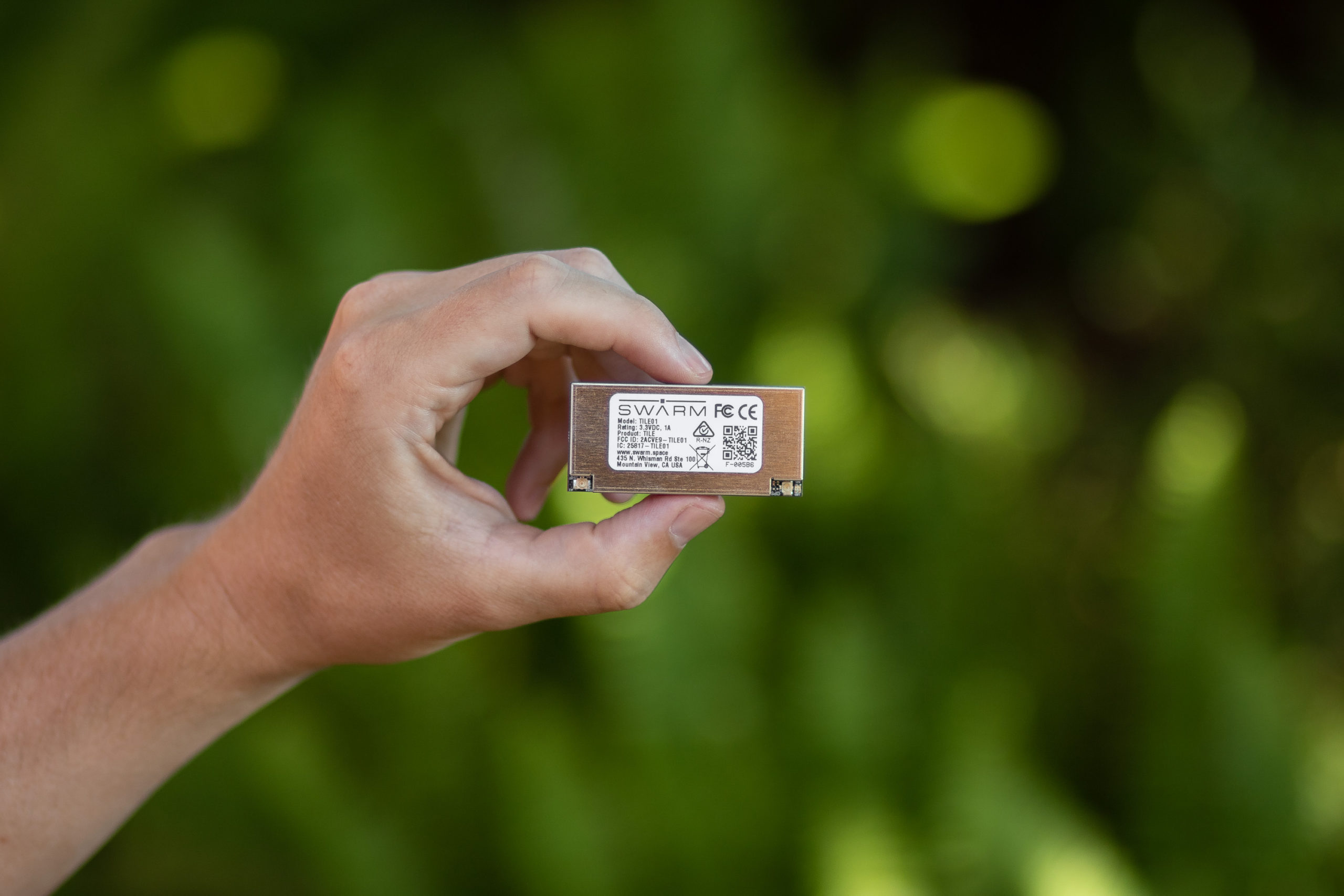 The Swarm Tile hardware won’t be sold anymore, but is still supported … for now. Image courtesy of Swarm.
The Swarm Tile hardware won’t be sold anymore, but is still supported … for now. Image courtesy of Swarm.
Our guest this week is JJ Lechleiter, SVP and general manager of PTC’s Vuforia business, discussing another kind of wearable — headsets. Lechleiter has been building augmented and mixed reality software for years, and shared whether he thinks the introduction of Apple’s Vision Pro headset will change the adoption of mixed reality, augmented reality, and virtual reality in manufacturing operations. He also shares different use cases where AR and VR are already in use and explains the various reasons one might use one over the other. Lechleiter discusses different headsets already on the market and shares some thoughts about how AI, IoT, and AR will get used in day-to-day manufacturing. It’s a good show.
Hosts: Stacey Higginbotham and Kevin Tofel
Guest: JJ Lechleiter, of PTC’s Vuforia business
Sponsors: Blynk and Particle- Why wouldn’t Apple make a hearing aid?
- Is Humane the future tech that moves us beyond the smartphone?
- Swarm stops selling its VHF satellite hardware
- Can Apple move the needle on mixed reality in manufacturing?
- When to use AR and when VR makes more sense
The post Episode 430: The theme of this show is wearables appeared first on IoT Podcast - Internet of Things.
6 July 2023, 9:00 am - 1 hour 1 minuteEpisode 429: Why Roku wants a smart home OS
This week we learned a bit more about streaming provider Roku’s plans to build a smart home operating system. This is in addition to all of the new smart home devices the company has developed using Wyze hardware. Because Kevin Tofel is on vacation, I’m talking about all this with my co-host and the creator of the Lowpass newsletter Janko Roettgers, who is a smart TV expert. Janko explains what’s happening with this deal and the overall shift to control smart homes through televisions. We then talk about smart energy management options from SmartThings, and Josh.ai’s new JoshGPT service that combines traditional smart home control with a large language model. In smaller news bits we cover two new sensors from SimpliSafe, new Matter-enabled Wi-Fi light switches from TP-Link’s Tapo brand, a potential audio streaming device from Eve, and purported new sensors for IKEA’s smart home ecosystem. Nanoleaf also launched a reasonably-priced way to give your TV ambient lighting. We also hear from a listener about his review of the Bond IR device we recommended a few weeks back.
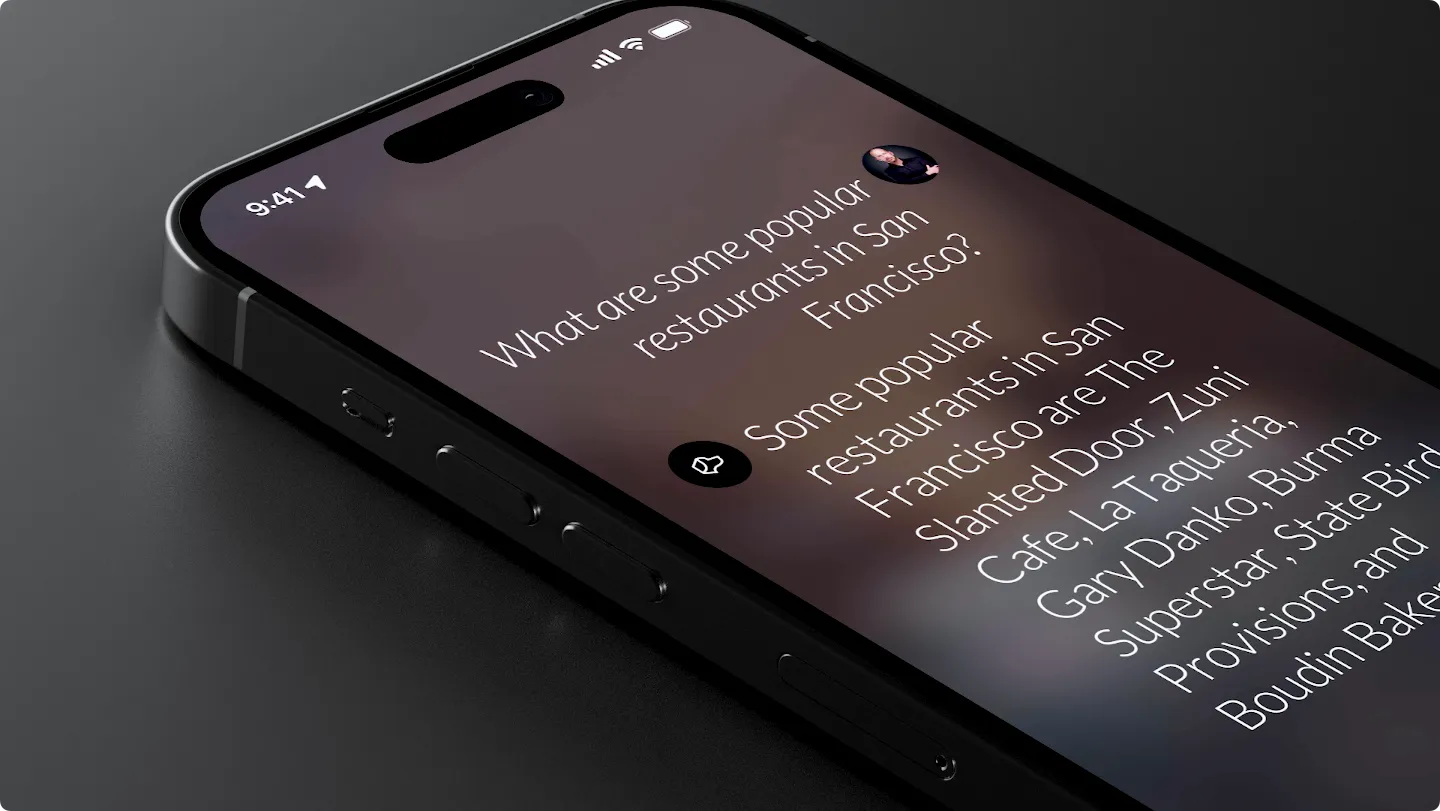 Josh.ai’s new generative AI model can answer many more questions than a traditional home assistant. And it can still turn on the lights. Image courtesy of Josh.ai.
Josh.ai’s new generative AI model can answer many more questions than a traditional home assistant. And it can still turn on the lights. Image courtesy of Josh.ai.
Our guest this week is Scott Ford, the CEO of Pepper. Pepper recently teamed up with Embedded Insurance to create an add-on cyber insurance policy that Pepper can offer through its partnerships with service providers and consumer device makers. Pepper provides a smart home application and service for other businesses, for example providing a smart home interface for an ISP or providing cloud storage services for a connected camera maker. Much like adding on cloud storage can generate extra revenue, adding cyber insurance or other insurance policies can generate money. So customers of Pepper’s customers may soon get a notification asking if they want to pay $5 for cyber insurance that will offset some of the costs of identity theft, cyberbullying, cyber extortion, and more. Ford talks about the cyber insurance product and about how connected devices are changing the way that insurers market their products, and how they assess risk. Honestly, that risk assessment is both exciting and a little bit scary. Enjoy the show.
Hosts: Stacey Higginbotham and Janko Roettgers, creator of the Lowpass newsletter
Guest: Scott Ford, the CEO of Pepper
Sponsors: Blynk and Particle- Does Roku really want to build a smart home OS or just sell more gear?
- Josh.ai brings generative AI to smart homes, and it’s nice
- Nanoleaf’s 4-D screen mirror tech is pretty cool
- Why your smart camera maker may soon offer you insurance
- How connected devices change the way insurance is sold … and priced
The post Episode 429: Why Roku wants a smart home OS appeared first on IoT Podcast - Internet of Things.
29 June 2023, 10:00 am - 56 minutes 2 secondsEpisode 428: How to add ChatGPT to the smart home
This week’s podcast tackles Kevin’s real-world experience with the Google Pixel tablet and speaker dock. He liked the tablet, but as a smart home accessory it’s lacking, which is what we had originally anticipated. But it’s still a bummer, because I want a good Google Home display option as Google deprecates third-party Google Home display devices. Then we talk about a couple smart energy products including Dracula Technologies’ new energy harvesting technology that can “suck” even more power from sunlight, Savant’s new energy storage device for homes, and a smart plug from EcoFlow that connects to Kevin’s existing rechargeable battery. The industrial internet of things gets a mention thanks to IDC putting out a new report estimating that total spending on IIoT will be $1 trillion in 2026. Get on it. We then get a bit random, discussing smart water filtration stations, and what Broadcom’s new Wi-Fi 7 chips means for Wi-Fi and for smartphones, before hitting a Thread-enabled dev kit using an ESP32 and Philips Hue bulbs getting a feature tweak. We close the news segment by answering a listener question about connecting Zigbee bulbs between IKEA’s and Home Assistant’s platforms.
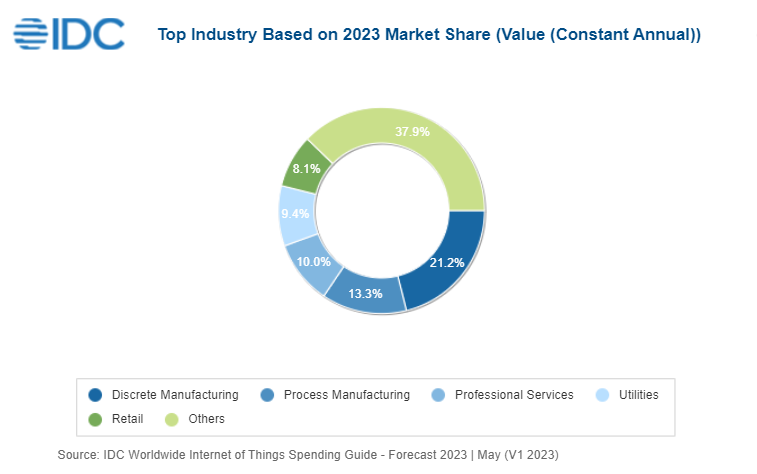 Image courtesy of IDC.
Image courtesy of IDC.
This week’s guest is Ran Roth, CEO and co-founder of Sensibo, a maker of smart HVAC controllers. The add-on devices connect to window units, mini splits and other A/C and heating units that use IR controllers. We talk about smart energy and the road the company has taken since its founding in 2014. But most of our conversation focuses on how Sensibo is using ChatGPT to improve the user experience with its devices. Roth also hints at other potential use cases for ChatGPT that are less intuitive, and explains how he thinks the availability of large language models will help companies that have access to them use their data more easily. He likens it to the shift that Amazon’s cloud computing had on innovation after AWS launched cloud computing (EC2) in 2006. He then talks about what he’s learned so far and the concerns people have around AI and privacy. It’s a good show.
Hosts: Stacey Higginbotham and Kevin Tofel
Guest: Ran Roth, CEO and co-founder of Sensibo
Sponsors: Blynk and Particle- As expected, Google’s Pixel tablet isn’t a major improvement for the smart home
- Better energy harvesting from Dracula sucks more power from light
- Broadcom’s chips could lead to smartphones with Zigbee or Thread
- How Sensibo is using ChatGPT to parse a lot of data
- What Sensibo has learned about using generative AI
The post Episode 428: How to add ChatGPT to the smart home appeared first on IoT Podcast - Internet of Things.
22 June 2023, 9:00 am - 1 hour 3 minutesEpisode 427: What it takes to put LTE on the moon
We start this week’s show with a review of DeviceScript, a limited subset of the TypeScript programming language, built by Microsoft to bring a more modern programming option to connected device programing. Kevin downloaded the code and tried it out on a simulated device and shares his thoughts. Also in programming news, Google released a … Continue reading Episode 427: What it takes to put LTE on the moon
The post Episode 427: What it takes to put LTE on the moon appeared first on IoT Podcast - Internet of Things.
15 June 2023, 9:00 am - More Episodes? Get the App
- https://iotpodcast.com/
- en-US
Your feedback is valuable to us. Should you encounter any bugs, glitches, lack of functionality or other problems, please email us on [email protected] or join Moon.FM Telegram Group where you can talk directly to the dev team who are happy to answer any queries.
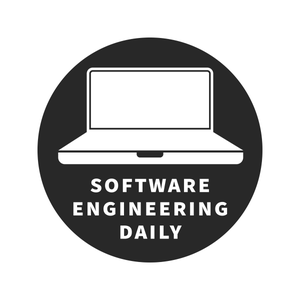 Software Engineering Daily
Software Engineering Daily
 Masters of Scale
Masters of Scale
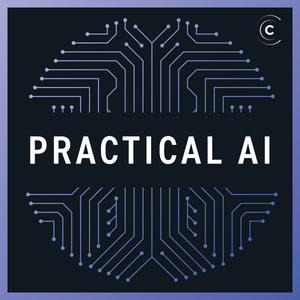 Practical AI: Machine Learning, Data Science, LLM
Practical AI: Machine Learning, Data Science, LLM
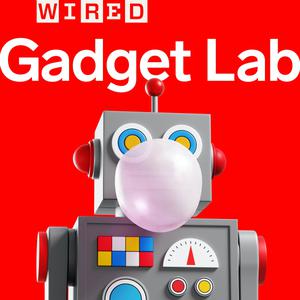 Uncanny Valley | WIRED
Uncanny Valley | WIRED
 WSJ Tech News Briefing
WSJ Tech News Briefing
 Security Now (Audio)
Security Now (Audio)